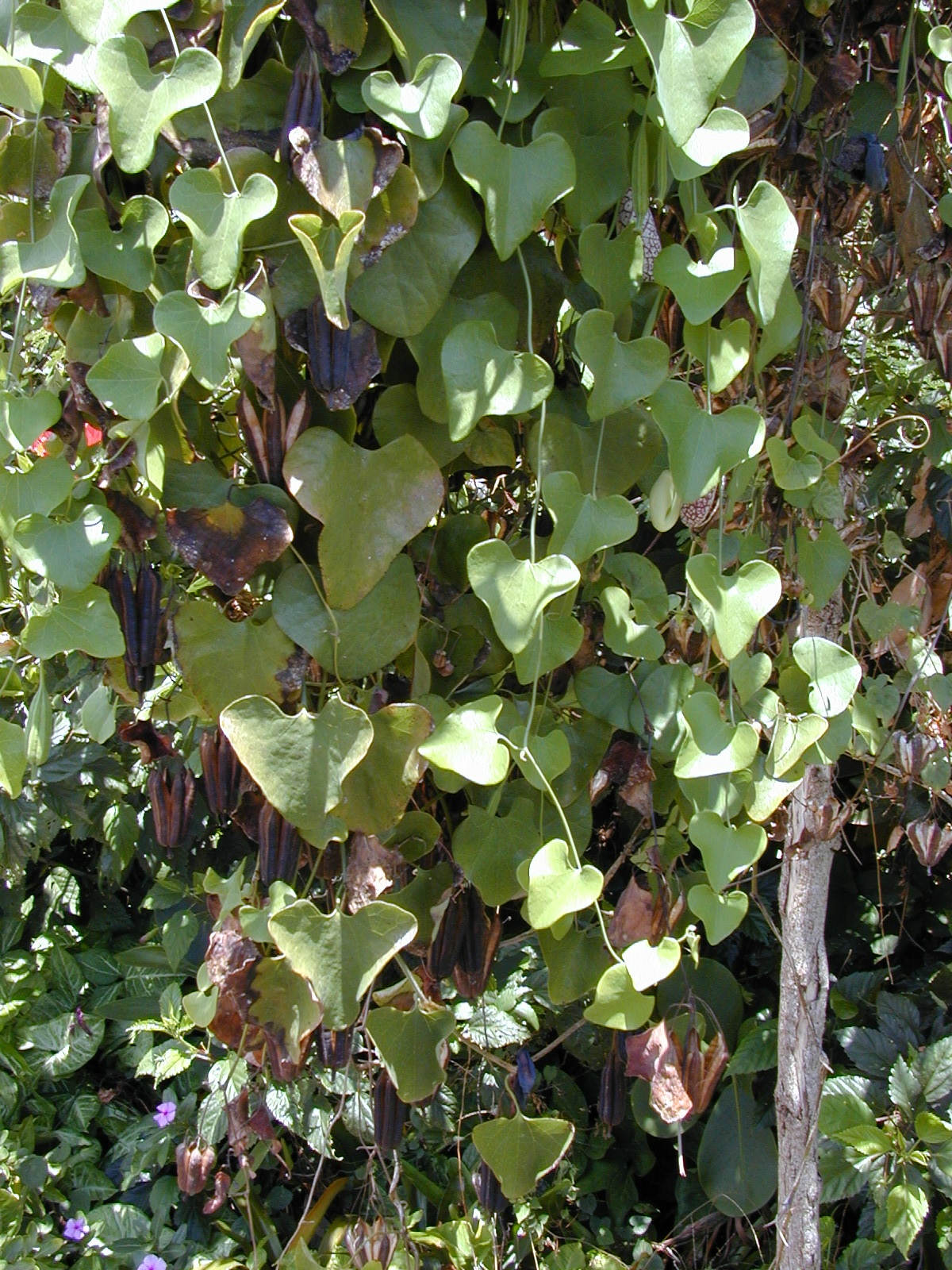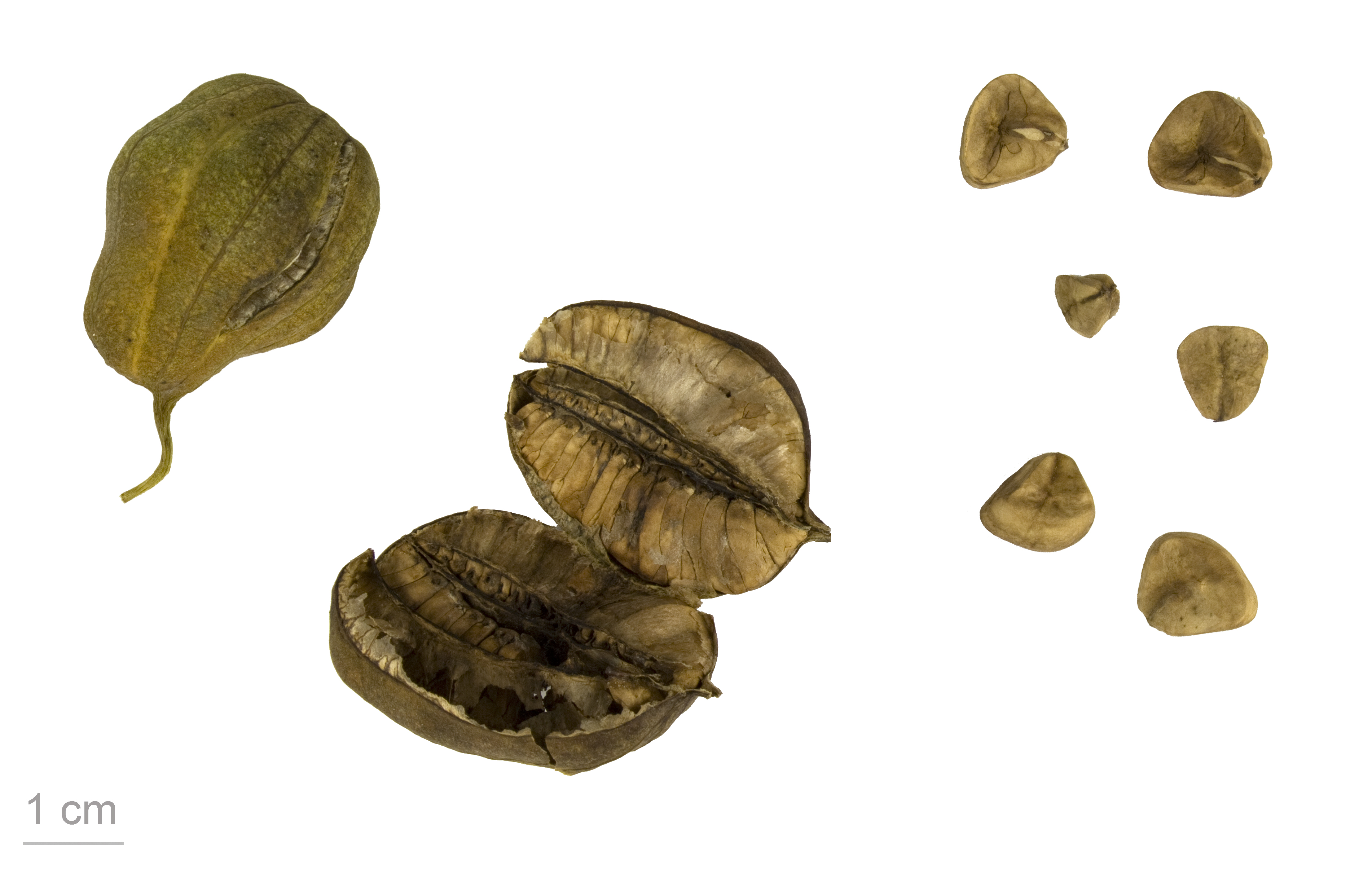|
Aristolochia
''Aristolochia'' () is a large plant genus with over 500 species that is the type genus of the family Aristolochiaceae. Its members are commonly known as birthwort, pipevine or Dutchman's pipe and are widespread and occur in the most diverse climates. Some species, like '' A. utriformis'' and '' A. westlandii'', are threatened with extinction. ''Isotrema'' is usually included here, but might be a valid genus. If so, it contains those species with a three-lobed calyx. Description ''Aristolochia'' is a genus of evergreen and deciduous lianas (woody vines) and herbaceous perennials. The smooth stem is erect or somewhat twining. The simple leaves are alternate and cordate, membranous, growing on leaf stalks. There are no stipules. The flowers grow in the leaf axils. They are inflated and globose at the base, continuing as a long perianth tube, ending in a tongue-shaped, brightly colored lobe. There is no corolla. The calyx is one to three whorled, and three to six toot ... [...More Info...] [...Related Items...] OR: [Wikipedia] [Google] [Baidu] |
Aristolochiaceae
The Aristolochiaceae () are a family, the birthwort family, of flowering plants with seven genera and about 400 known species belonging to the order Piperales. The type genus is '' Aristolochia'' L. Description They are mostly perennial, herbaceous plants, shrubs, or lianas. The membranous, cordate simple leaves are spread out, growing alternately along the stem on leaf stalks. The margins are commonly entire. No stipules are present. The bizarre flowers are large to medium-sized, growing in the leaf axils. They are bilaterally or radially symmetrical. Classification Aristolochiaceae are magnoliids, a basal group of angiosperms which are not part of the large categories of monocots or eudicots. As of APG IV (2016), the former families Hydnoraceae and Lactoridaceae are included, because exclusion would make Aristolochiaceae in the traditional sense paraphyletic. Some newer classification schemes, such as the update of the Angiosperm Phylogeny Group, place the family Ari ... [...More Info...] [...Related Items...] OR: [Wikipedia] [Google] [Baidu] |
Aristolochia Westlandii
''Aristolochia westlandii'' is a species of plant in the family Aristolochiaceae. It is found in China and Hong Kong, in valley forests in Guangdong Province ) means "wide" or "vast", and has been associated with the region since the creation of Guang Prefecture in AD 226. The name "''Guang''" ultimately came from Guangxin ( zh, labels=no, first=t, t= , s=广信), an outpost established in Han dynasty ... at an elevation of . The leaves are long, narrow and pointed (). The flowers are bent tubes from long that grow from the base of a leaf. They are yellow with purple veins and blotches. in Flora of China at ''www.efloras.org'', taken from Hemsley, J''. Bot''. 23: 286. 1885. References External links *[...More Info...] [...Related Items...] OR: [Wikipedia] [Google] [Baidu] |
Aristolochia Clematitis
''Aristolochia clematitis'', or European birthwort, is a twining herbaceous plant in the family Aristolochiaceae, which is native to Europe. The leaves are heart shaped and the flowers are pale yellow and tubular in form. The plant seeks light by ascending the stems of surrounding plants. Toxicity It was formerly used as a medicinal plant, though it is now thought to be the cause of thousands of kidney failure cases in Romania, Bulgaria, Serbia, Bosnia and Herzegovina and Croatia. The initial hypothesis that seeds from the plant were unintentionally consumed through contaminated flour has come to be questioned. Urinary tract malignancies among those who have consumed the plant are also reported. The link between kidney failure and aristolochic acid, which the plant contains, was discovered after a clinic for obesity in Belgium Belgium, officially the Kingdom of Belgium, is a country in Northwestern Europe. Situated in a coastal lowland region known as the Low Countries ... [...More Info...] [...Related Items...] OR: [Wikipedia] [Google] [Baidu] |
Aristolochia Labiata
''Aristolochia labiata'', the mottled Dutchman's pipe or rooster flower, is an ornamental plant which is native to Brazil. References External links labiata Oikopleuridae is a family of larvacean tunicates. A comparatively species-rich family, it has been especially well-researched thanks to the ubiquity of ''Oikopleura dioica ''Oikopleura dioica'' is a species of small pelagic tunicate found in t ... Flora of Brazil {{Piperales-stub ... [...More Info...] [...Related Items...] OR: [Wikipedia] [Google] [Baidu] |
Aristolochia Utriformis
''Aristolochia utriformis'' is a species of plant in the family Aristolochiaceae. It is endemic to China China, officially the People's Republic of China (PRC), is a country in East Asia. With population of China, a population exceeding 1.4 billion, it is the list of countries by population (United Nations), second-most populous country after .... It is found in forests at about 1900 meters in Yunnan Province. The plants are climbing herbs or shrubs that have pointed leaves with heart shaped bases. The yellow-green flowers are tube shaped and bent. They hang from the base of a leaf.Flora of China, http://www.efloras.org/florataxon.aspx?flora_id=2&taxon_id=200006634 References Flora of China utriformis Critically endangered plants Taxonomy articles created by Polbot {{Piperales-stub ... [...More Info...] [...Related Items...] OR: [Wikipedia] [Google] [Baidu] |
Sepal
A sepal () is a part of the flower of angiosperms (flowering plants). Usually green, sepals typically function as protection for the flower in bud, and often as support for the petals when in bloom., p. 106 Etymology The term ''sepalum'' was coined by Noël Martin Joseph de Necker in 1790, and derived . Collectively, the sepals are called the ''calyx'' (plural: calyces), the outermost Whorl (botany), whorl of parts that form a flower. The word ''calyx'' was adopted from the Latin ,Jackson, Benjamin, Daydon; A Glossary of Botanic Terms with their Derivation and Accent; Published by Gerald Duckworth & Co. London, 4th ed 1928 not to be confused with 'cup, goblet'. The Latin ''calyx'' is derived from Greek 'bud, calyx, husk, wrapping' ( Sanskrit 'bud'), while is derived from Greek 'cup, goblet'; both words have been used interchangeably in botanical Latin. Description The term ''tepal'' is usually applied when the parts of the perianth are difficult to distinguish, e. ... [...More Info...] [...Related Items...] OR: [Wikipedia] [Google] [Baidu] |
Liana
A liana is a long-Plant stem, stemmed Woody plant, woody vine that is rooted in the soil at ground level and uses trees, as well as other means of vertical support, to climb up to the Canopy (biology), canopy in search of direct sunlight. The word ''liana'' does not refer to a Taxonomy (biology), taxonomic grouping, but rather a habit of plant growth—much like ''tree'' or ''shrub''. It comes from standard French , itself from an Antilles French dialect word meaning to sheaf (agriculture), sheave. Ecology Lianas are characteristic of Tropical and subtropical moist broadleaf forests, tropical moist broadleaf forests (especially Tropical seasonal forest, seasonal forests), but may be found in temperate rainforests and temperate deciduous forests. There are also temperate lianas, for example the members of the ''Clematis'' or ''Vitis'' (wild grape) genera. Lianas can form bridges in the forest canopy, providing Arboreal locomotion, arboreal animals—including ants and many ot ... [...More Info...] [...Related Items...] OR: [Wikipedia] [Google] [Baidu] |
Aristolochia Durior
''Bignonia capreolata'' is a vine commonly referred to as crossvine. The common name refers to the cross-shaped pattern revealed when the stem is cut; this pattern results from four radial wedges of phloem embedded within the stem's xylem. It is native to the central and southern United States. The vine climbs without twining but does produce tendrils. It produces long tubular flowers which are red and yellow and frequently have a mocha fragrance. The leaves are dark green to almost purple and produced as opposite pairs with terminal tendrils. The vine often climbs very high, with leaves only remaining on the uppermost portion of the plant. Crossvine can spread aggressively through stolons and may need to be managed in garden or domestic settings. Plant Guide. There was for some time confusion surrounding the name of this plant, which was apparently sometimes referred to as "''Bignonia crucigera''", a name more properly referring to a different plant altogether. Descriptio ... [...More Info...] [...Related Items...] OR: [Wikipedia] [Google] [Baidu] |
Gynostemium
The column, or technically the gynostemium, is a reproductive structure that can be found in several plant families: Aristolochiaceae, Orchidaceae, and Stylidiaceae. It is derived from the fusion of both male and female parts (stamens and pistil) into a single organ. The top part of the column is formed by the anther, which is covered by an anther cap. This means that the ''style'' and ''stigma'' of the pistil, with the filaments and one or more anthers, are all united. Orchidaceae The stigma sits at the apex of the column in the front but is pointing downwards after resupination (the rotation by 180 degrees before unfolding of the flower). This stigma has the form of a small bowl, the clinandrium, a viscous surface embedding the (generally) single anther. On top of it all is the anther cap. Sometimes there is a small extension or little beak to the median stigma lobe, called rostellum. Column wings may project laterally from the stigma. The column foot is formed by the att ... [...More Info...] [...Related Items...] OR: [Wikipedia] [Google] [Baidu] |
Globose
This glossary of botanical terms is a list of definitions of terms and concepts relevant to botany and plants in general. Terms of plant morphology are included here as well as at the more specific Glossary of plant morphology and Glossary of leaf morphology. For other related terms, see Glossary of phytopathology, Glossary of lichen terms, and List of Latin and Greek words commonly used in systematic names. A B ... [...More Info...] [...Related Items...] OR: [Wikipedia] [Google] [Baidu] |
Species
A species () is often defined as the largest group of organisms in which any two individuals of the appropriate sexes or mating types can produce fertile offspring, typically by sexual reproduction. It is the basic unit of Taxonomy (biology), classification and a taxonomic rank of an organism, as well as a unit of biodiversity. Other ways of defining species include their karyotype, DNA sequence, morphology (biology), morphology, behaviour, or ecological niche. In addition, palaeontologists use the concept of the chronospecies since fossil reproduction cannot be examined. The most recent rigorous estimate for the total number of species of eukaryotes is between 8 and 8.7 million. About 14% of these had been described by 2011. All species (except viruses) are given a binomial nomenclature, two-part name, a "binomen". The first part of a binomen is the name of a genus to which the species belongs. The second part is called the specific name (zoology), specific name or the specific ... [...More Info...] [...Related Items...] OR: [Wikipedia] [Google] [Baidu] |
Axil
A leaf (: leaves) is a principal appendage of the stem of a vascular plant, usually borne laterally above ground and specialized for photosynthesis. Leaves are collectively called foliage, as in "autumn foliage", while the leaves, stem, flower, and fruit collectively form the shoot system. In most leaves, the primary photosynthetic tissue is the palisade mesophyll and is located on the upper side of the blade or lamina of the leaf, but in some species, including the mature foliage of ''Eucalyptus'', palisade mesophyll is present on both sides and the leaves are said to be isobilateral. The leaf is an integral part of the stem system, and most leaves are flattened and have distinct upper ( adaxial) and lower (abaxial) surfaces that differ in color, hairiness, the number of stomata (pores that intake and output gases), the amount and structure of epicuticular wax, and other features. Leaves are mostly green in color due to the presence of a compound called chlorophyll whic ... [...More Info...] [...Related Items...] OR: [Wikipedia] [Google] [Baidu] |






